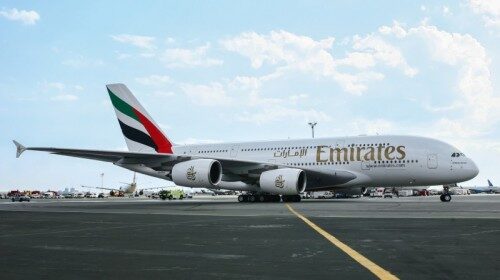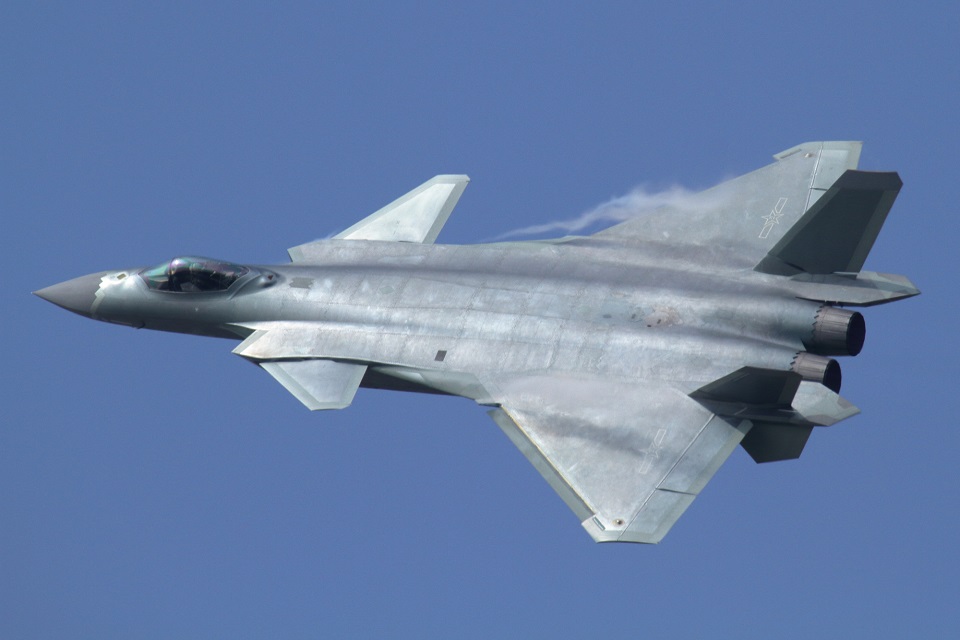Tech
Emirates’ first retired A380 to be repurposed in the UAE

- Signs contract with UAE-based specialist Falcon Aircraft Recycling to save most of its retired aircraft from landfill via a pioneering upcycling and recycling programme
- Iconic 1st generation A380 onboard bar and other cabin features to be transformed into bespoke furniture, plus a range of aviation memorabilia and retail items which will be released for sale in the coming months
- Portion of sale profits to benefit the Emirates Airline Foundation, the airline’s charity organisation focussed on helping disadvantaged children around the world
Dubai, UAE, 01 November 2021 – Emirates has signed a contract with UAE-based Falcon Aircraft Recycling on a pioneering initiative, where its first retired A380 aircraft will be upcycled and recycled, dramatically reducing the environmental impact of the deconstruction process and drastically reducing landfill waste.
The extensive materials recovery and repurposing activities will be entirely conducted in the UAE, the airline’s home base, further reducing the project’s environmental footprint.
Increasingly, retired aircraft are flown to remote locations and left to languish after being stripped for parts. Traditional salvage and recycling projects focus on recovering only profitable components, thereby leaving behind a substantial portion of the aircraft and materials that go into landfill or sit idle indefinitely for years. Also, many aircraft items can be difficult to recycle or dispose, for instance fire retardant fabrics and composite materials.
After completing its last commercial mission, A6-EDA, the first A380 ever delivered to Emirates, was retired from service and brought to the airline’s Engineering Centre where Emirates engineers retrieved serviceable components such as engines, landing gears and flight control components. The aircraft was then deregistered and handed over to the Falcon Aircraft Recycling team to begin the process of carefully breaking down the aircraft.
Emirates new advertisement 6 interesting facts , How they did it ?
Partnering with Wings Craft, another UAE-based firm that specialises in producing custom furniture and merchandise from aircraft materials, Falcon Aircraft Recycling will design and manufacture unique collectibles and retail items from the materials and parts removed from the aircraft. These items will be launched for sale in phases over the coming months.
Emirates To Take Final Airbus A380 Delivery In November 2021
A portion of profits from the sale of all items upcycled and recycled from Emirates’ first retired A380 will benefit the Emirates Airline Foundation.
Emirates’ first A380, previously operating as A6-EDA, was retired after an illustrious service record.
Here are some of its service highlights:
- Delivered from Airbus’ Hamburg facility on: 28 July 2008
- First commercial flight: Dubai-New York JFK on 01 August 2008
- Last commercial flight: Singapore-Dubai on 08 March 2020
- Total number of flights: 6,319
- Airports visited: 62
ANA Pilots Can Now Fly Both Airbus A380 & A320
About Falcon Aircraft Recycling
Founded in 2013, Falcon Aircraft Recycling is the first fully accredited aircraft recycling operation in the UAE with deconstruction programmes at Dubai Industrial City and Fujairah International Airports. Working closely with Airport Management and Civil Aviation, Falcon Aircraft Recycling provides cost effective and environmentally friendly end-of-life solution to the ongoing problem of retired aircraft. For more information on the business and its projects visit: www.falconaircraftrecycling.

Aerospace
China’s Fighter Jets Turn Wings into Autonomous Drones

In a striking display of aerospace innovation, Chinese engineers have reportedly tested a groundbreaking “combiner” blended-wing stealth aircraft with detachable drone wings.
This transformative technology, reminiscent of fictional “combiner” Transformers, was showcased during a test flight at an undisclosed airport near the Mu Us Desert’s southern edge.
The stealth fighter, equipped with powerful twin-engine turbofans and a sleek delta-wing design, demonstrated unprecedented versatility. During the flight, segments of its wings detached, seamlessly transforming into two separate “flying wing” drones powered by electric fans.
This capability marks a significant leap in aerial warfare, enabling the fighter to deploy autonomous drones mid-flight for strategic operations.
Future stealth fighters will prioritize integration with drones
Yang Wei, chief designer of China’s J-20 stealth fighter, emphasized that future iterations will prioritize seamless integration with drones. The development includes plans for a two-seater variant of the J-20 to enhance operational coordination with unmanned aerial vehicles (UAVs), reflecting China’s strategic focus on combined arms tactics.
The next-generation stealth fighter design integrates two drones directly into the aircraft’s delta wing structure, departing from earlier attempts that fixed drones to wingtips.
This innovative “rear edge docking configuration,” connecting leading edges of the drones to the fighter’s trailing edge, enhances stability during separation. However, it poses challenges such as managing significant changes in the aircraft’s center of gravity and aerodynamic balance.
FCC-100 flight control computer ensures precise control
To address these complexities, Du’s team developed advanced algorithms capable of analyzing and compensating for disturbances like wind changes during drone separation. Both the fighter and the drones utilize the cutting-edge FCC-100 flight control computer from Northwestern Polytechnical University, ensuring precise control and maneuverability.
While specific details about the test flight date remain classified, the project signifies remarkable advancements in aircraft stability and control. These developments pave the way for practical applications in future combat scenarios.
Chinese scientists are also exploring additional technologies like plasma stealth and advanced airflow management to further enhance the capabilities of their next-generation fighters.
-

 Travel1 week ago
Travel1 week agoAir India to Expand US Operations with Three New Routes After a Decade
-

 Travel2 weeks ago
Travel2 weeks agoWhy We Should Avoid These Stamps in a Passport
-

 Airlines1 month ago
Airlines1 month agoInvestigations Reveal Fake Chinese Titanium in Boeing and Airbus Jets
-

 Tech4 weeks ago
Tech4 weeks agoChina’s CATL Plans 1,800-Mile Electric Plane Launch by 2027
-

 Airport3 days ago
Airport3 days agoTop 10 Largest Airports in the World by Size
-

 Aerospace4 weeks ago
Aerospace4 weeks agoChina’s Fighter Jets Turn Wings into Autonomous Drones
-

 Airlines4 days ago
Airlines4 days agoAir India Rolls Out A350s for Delhi-New York JFK and Newark Routes
-

 Defence3 weeks ago
Defence3 weeks agoBoeing Enhances Chinook with New Engines and Block II Upgrades at $96 Million







